How to determine the age of your American Standard HVAC system? Here we provide information for how to decode the serial number nomenclature on American Standard heating and cooling products. Including the date of manufacture, capacity, and any other information related to your system.
Today, we’re diving into a crucial topic for maintaining your home’s comfort system – the American Standard serial numbers. Now, I know what you’re thinking, “Serial numbers? Why should I care?” But trust me, these aren’t random digits slapped onto your AC or furnace for kicks. The American Standard serial number is packed with information that can save you time, money, and many headaches down the line.
Whether you’re filing a warranty claim or want to know the age of your system, the serial number holds the key. So, grab a notepad, and let’s get ready to crack the code of your American Standard serial number together. After all, knowledge is power – and when it comes to your home’s comfort, you want to be the one in control, right?
American Standard Serial Number Location
American Standard serial numbers are usually located on the exterior of the unit, whether it’s on top, front, or sides. On occasion, you may find the serial number inside of the unit, accessed by opening a removable front cover.
For American Standard Air Conditioner or Heat Pump; the serial number label is located on the top, right-rear of the outdoor unit.
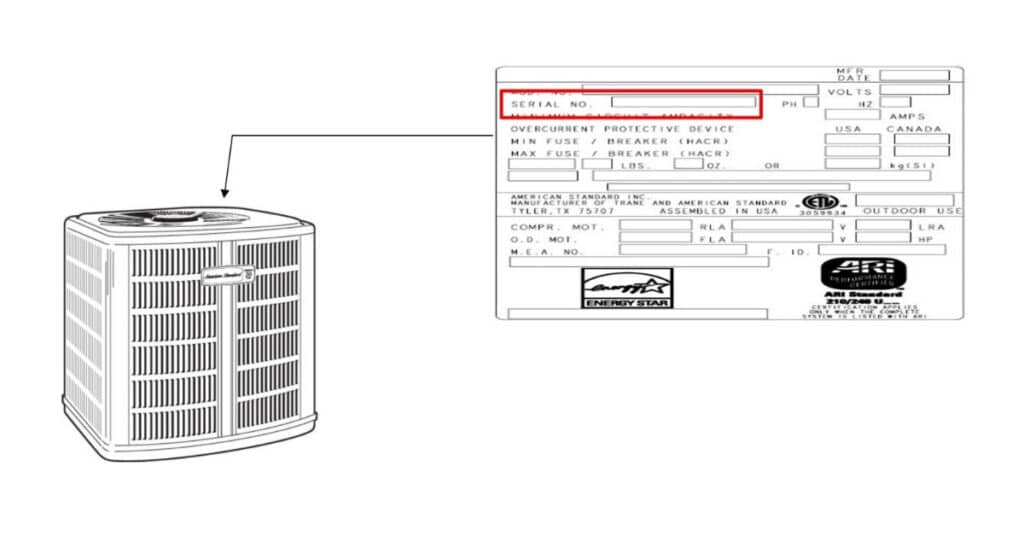
For American Standard Furnace; the serial number label is located on the right or left side of the indoor unit. (closet, attic, basement, garage)
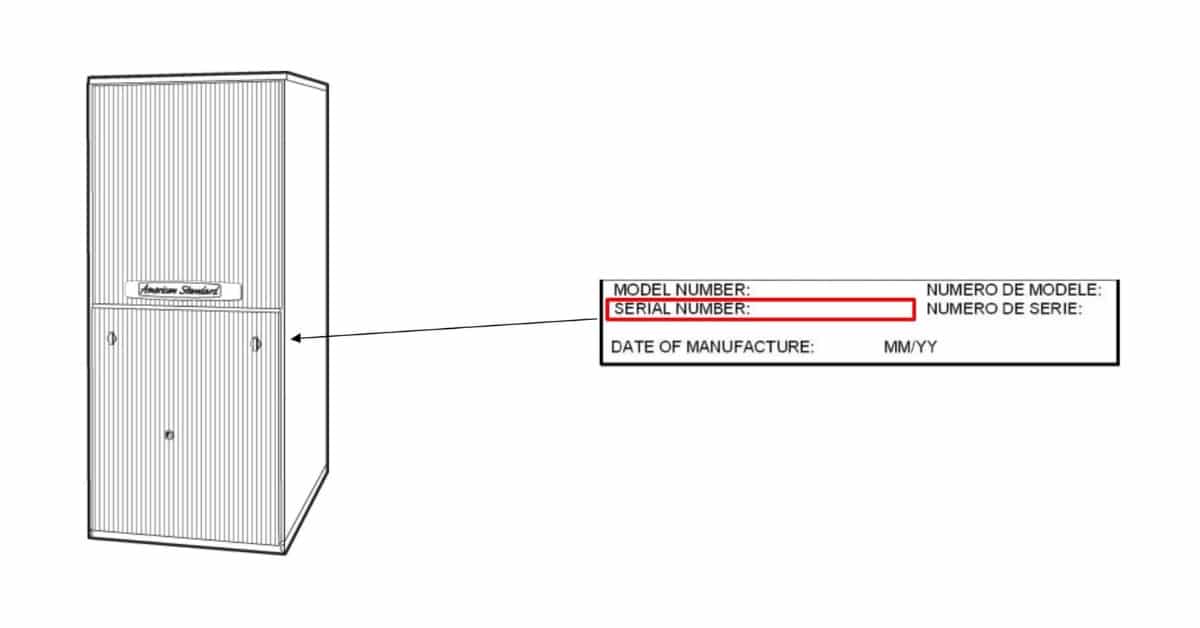
For American Standard Air Handler; the serial number label is located on the front panel of the indoor unit. (closet, attic, basement, garage)
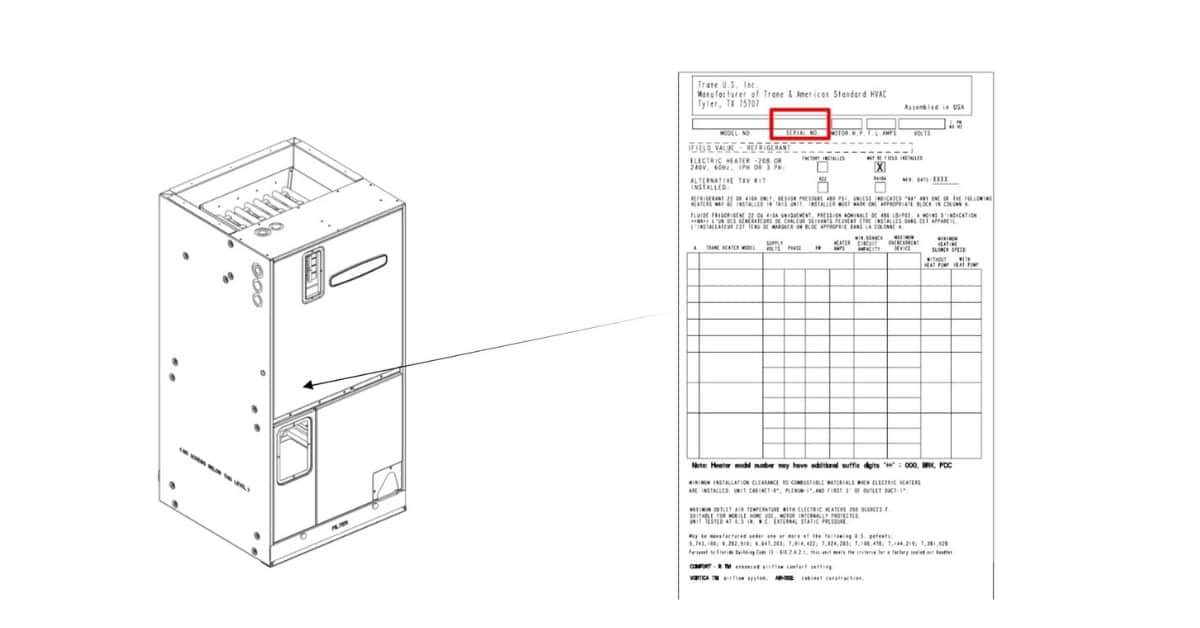
For American Standard Thermostat; the serial number label is located behind the front cover. (Remove from wall plate)
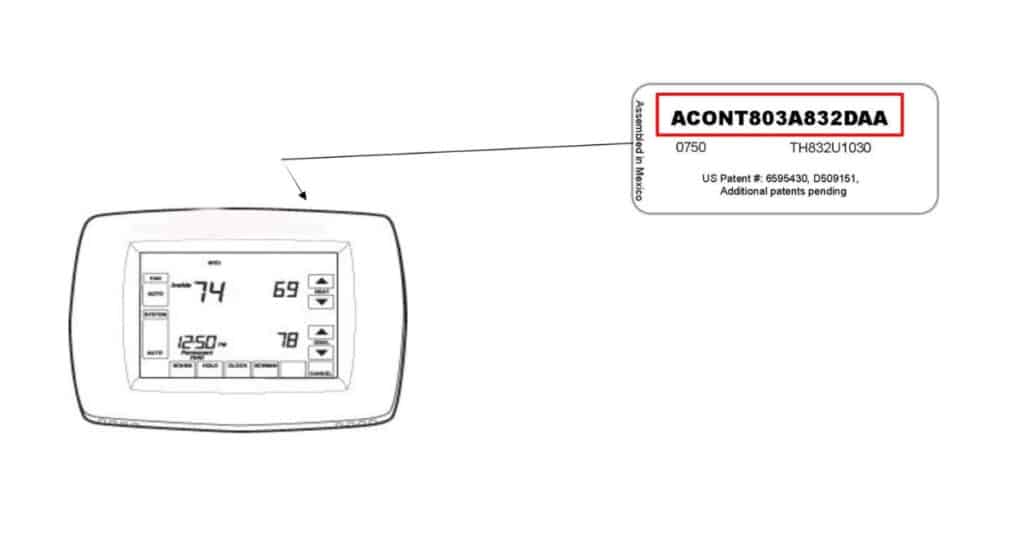
For American Standard Humidifier; the serial number label is located on the bottom of the unit. (near furnace or air handler)
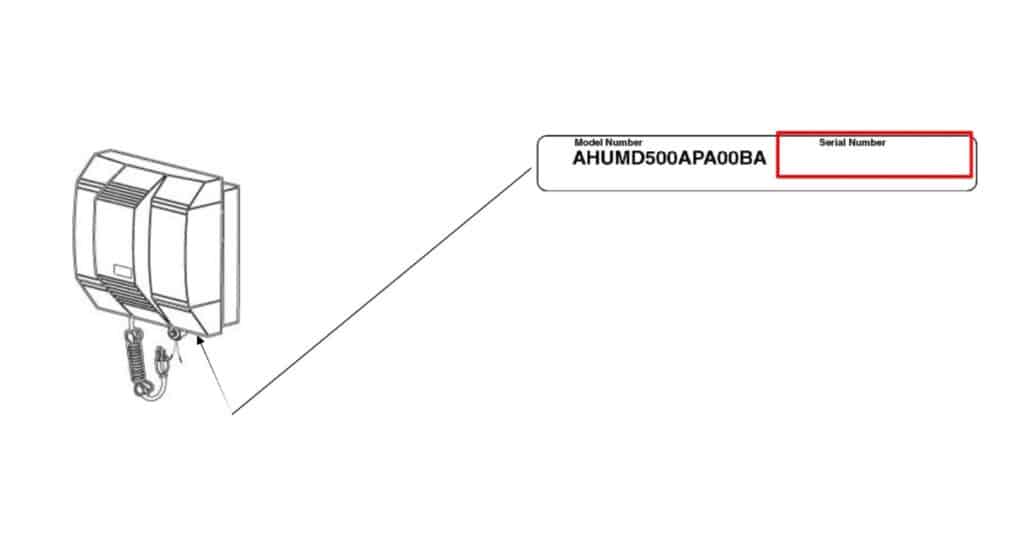
Not all of the information labels seen on and in HVAC units are data tags. Don’t get confused and don’t think that as you are unable to find the model and serial number on a label that isn’t a data tag.
Look more deeply on the outside and inside of the unit. A true “data tag” includes brand, model number, and serial number, often along with other information.
How To Read The American Standard Serial Number
When you’re staring at the serial number of your American Standard unit, it might seem like you’re trying to read ancient hieroglyphs. But fear not! There’s a method to this madness, and it’s actually pretty logical once you get the hang of it.
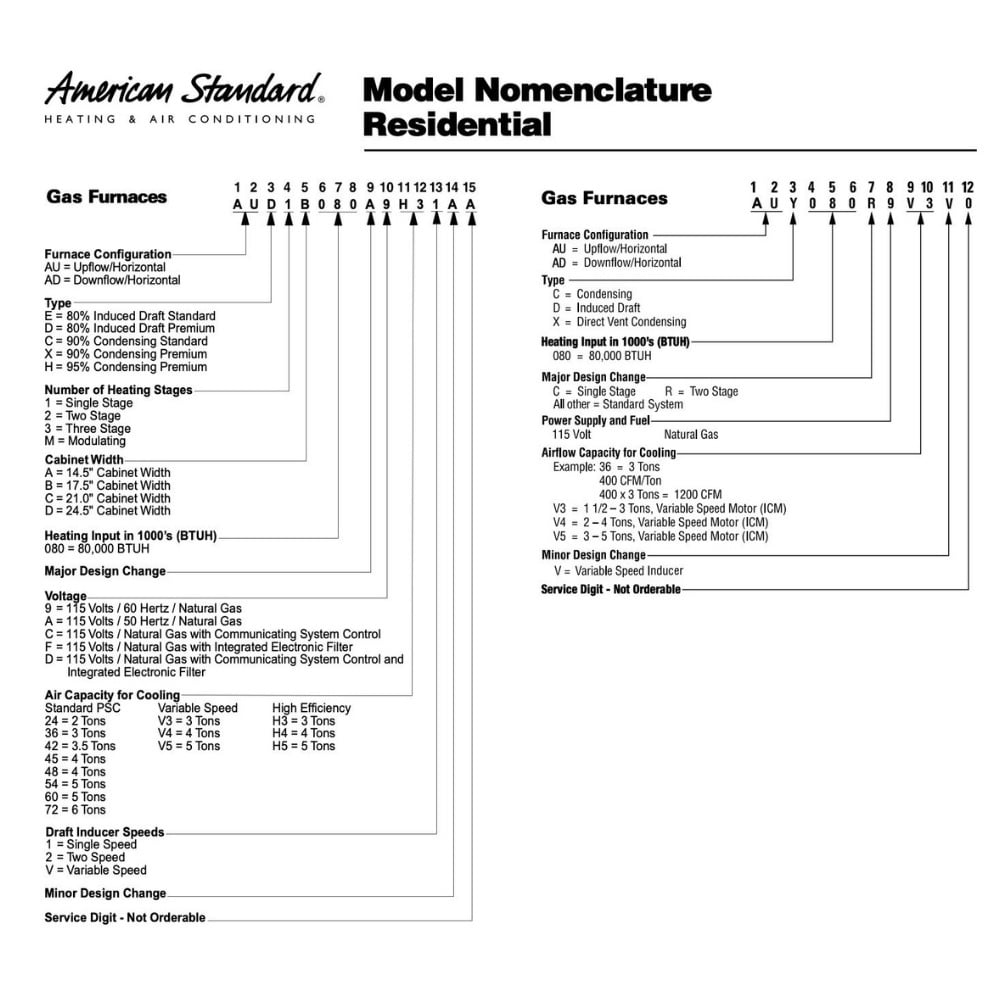
Each serial number is a unique identifier that tells a story. Typically, it’s a combination of letters and numbers that encode the manufacture date and, sometimes, the sequence of production. Let’s break it down.
1. The Manufacturing Date
This is often the golden nugget of information. American Standard usually uses a four-digit number for this part, and it’s pretty straightforward. The first two digits can represent the week of the year the unit was made, and the next two often stand for the year itself. So, if you see “2215,” your unit might have been manufactured in the 22nd week of 2015.
2. The Sequence of Production
This part can vary, but it often follows the date code. It could be a set of numbers that tell you where in the lineup your unit came off the assembly line. This might not seem immediately important, but it can be super useful for quality control or if there’s a recall.
3. Other Encoded Details
Depending on the specific model and year of manufacture, there might be other bits of information tucked away in that serial number. It could indicate which plant manufactured your unit or specific aspects of the product’s original configuration.
By getting familiar with these codes, you’re not just decoding a serial number; you’re becoming an informed homeowner who’s poised for proactive maintenance. You’ll have a leg up when talking with technicians, and you’ll be able to quickly ascertain crucial information without breaking a sweat – unless, of course, you’re doing it by the furnace!
How To Determine The Age Of American Standard HVAC
You can find the age of American Standard HVAC by decoding the serial number. The production date can be found in the first 4 or 5 digits of serial number.
Here we have an example of serial number nomenclature and how read it.
Serial Number #7236TPW3F – This style of serial number are used from 2000 – 2009
- Year of manufacture – The first numerical digit of the serial number.
- Week of manufacture – The 2nd & 3rd numerical digits of the serial number.
- Work Day of the week of manufacture – The 4th numerical digit of the serial number.
Serial Number #19171KEDAA – This serial number style are used from 2010 and beyond.
- Year of manufacture – The 1st & 2nd numerical digits of the serial number.
- Week of manufacture – The 3rd & 4th numerical digits of the serial number.
- Work Day of the week of manufacture – 5th numerical digit.
Serial Number #R2342DWBF – This style of serial number is for units that are manufactured between 1980 to 1990.
- The year of manufacture is encoded in the first letter of the serial number.
- Week of manufacture is 2nd & 3rd numerical digits combined.
| W | 1983 | G | 1992 |
| X | 1984 | H | 1993 |
| Y | 1985 | J | 1994 |
| Z | 1986 | K | 1995 |
| B | 1987 | L | 1996 |
| C | 1988 | M | 1997 |
| D | 1989 | N | 1998 |
| E | 1990 | P | 1999 |
| F | 1991 | R | 2000 |
Other styles of serial number are similar to Trane serial number. As the two brands are under the same parent company; Ingersoll Rand. Other brands under this company are Amana and Goodman.
The date of production of American Standard HVAC can also be seen directly on the data tag. You don’t need to decode the serial number. Look at the picture below:
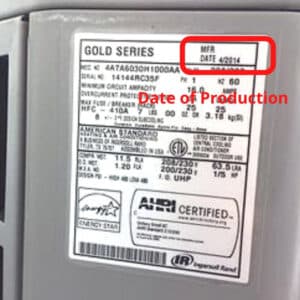
The Importance of Serial Numbers
Alright, let’s talk about why these serial numbers are more than just a string of characters. They are your go-to source for some pretty crucial info.
- Determining Age: Knowing the age of your HVAC system is crucial for maintenance and efficiency planning. The serial number gives you this information without hassle, letting you forecast potential needs for repairs or replacement.
- Warranty Registration: Your serial and model number is essential for warranty registration. It ensures you can claim the full benefits the manufacturer offers, such as free repairs or parts replacements. Registering your product might seem like a small step, but it can lead to significant savings if your system malfunctions while under warranty.
Keep your serial number handy – a tiny detail that makes a big difference in managing your HVAC system effectively.
Summary
In conclusion, the serial number on your American Standard HVAC unit isn’t just a random collection of letters and numbers—it’s the key to unlocking its history and securing your investment.
By understanding how to locate and interpret this number, you can easily determine the age of your unit, which is critical for effective maintenance scheduling and energy efficiency considerations. Moreover, it’s your entry point for warranty registration, ensuring you’re covered if anything goes wrong.
Remember, keeping your serial number accessible can streamline service checks, warranty claims, and provide peace of mind that you’re prepared for the future, whatever it may bring to your home’s comfort systems. So, take a moment to locate your serial number, jot it down, and keep it somewhere safe.






